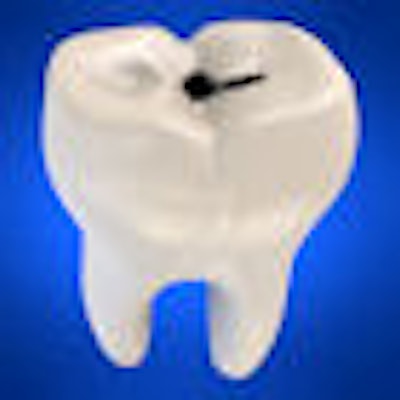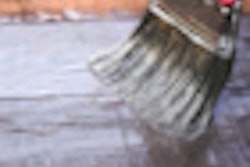
What types of noncarious lesions do dental practitioners most often choose to restore, and why?
That was the question addressed in a new study in the Journal of the American Dental Association (December 2011, Vol. 142:12, pp. 1368-1375).
Researchers from the University of Florida (UF) College of Dentistry in Gainesville analyzed data collected by a dental practice-based research network (DPBRN) over 30 months to quantify the reasons restorations are placed in noncarious lesions and assess the characteristics of the tooth, patient, and practitioner performing the restorations.
"The various types of NCTDs [noncarious tooth defects] can affect tooth sensitivity, dental plaque retention, structural integrity, and pulpal vitality, which also may be conditions that require placing a restoration," the researchers wrote. "Thus, the decision to restore NCTDs may be not only based on the need to replace lost tooth tissue, but also aimed at preventing further damage or based on aesthetic reasons."
The study spanned from July 2006 through December 2008 and utilized a consecutive patient/restoration recruitment design. DPBRN dentists from five different regions participated:
- Alabama and Mississippi
- Florida and Georgia
- Minnesota (private practice or HealthPartners dentists)
- Permanente Dental Associates, in cooperation with Kaiser Permanente's Center for Health Research in Portland, OR
- Denmark, Norway, and Sweden
When a practice joined the study, DPBRN investigators requested the involvement of each patient scheduled for a restoration on a previously unrestored permanent tooth surface until 50 restorations were enrolled. Patient participation was limited to their first appointment during the course of the study and a maximum of four restorations during the initial appointment.
Participating dentists reported consecutive restorations placed due to NCTDs, the characteristics of the patient, tooth type and surface restored, and restorative material used.
AAE lesions most common
After vetting the data, the researchers considered 1,301 restorations in which a single reason for restoring a NCTD was given in 874 patients treated by 178 dentists. Of these, 70% of patients received one restoration, 17% had two, 6% had three, and 6% had four restorations. In all, NCTDs accounted for 15% of 9,890 restorations reported.
The researchers found that abrasion, abfraction, and erosion (AAE) lesions and tooth fracture were the most commonly encountered reasons for restoring noncarious tooth surfaces (46%), while 31% were due to tooth fracture, 7% were for cosmetic reasons, and the remaining 16% were for all other reasons such as development defects or hypoplasia. Molars were more likely to receive restorations for fractures than other teeth.
“To restore or not restore these lesions and when to restore is what varies significantly among dentists.”
— Marcelle Nascimento, DDS, PhD
AAE are often found in patients older than 41 years, and 55% of restorations placed in this age bracket were for that reason, according to the study authors. Such statistics highlight the importance of preventive interventions at an early age to prevent the need for future restorative treatment, they noted.
In patients younger than 20, 66% of restorations were placed for other reasons, such as developmental defects, they added.
"The prevalence of AAE in dental patients has been reported to range from 5% to 85%," the researchers wrote. "The lack of clinical evidence about the prognosis for these lesions with or without intervention may be a major contributor to the variation in dentists' management decisions."
The type of practice a dentist worked also played a part in treatment choices.
"Dentists in large group practices placed restorations mainly owing to tooth fracture and AAE lesions, whereas dentists working in solo practices and small group practices placed restorations mostly owing to AAE lesions," the researchers wrote.
Favorites emerged when they charted the types of NCTDs and the material used to restore them. While 54% of resin-based composite restorations placed were for AAE lesions, 94% of AAE lesions were treated with resin-based composites. Most of the glass-ionomer (GI) or resin-modified glass ionomer (RMGI) restorations were placed because of AAE lesions (67% of all GI or RMGI restorations), the study authors noted.
They also found that, 75% of amalgam restorations were for fractures, while 26% of resin-based composite restorations were for tooth fractures.
Still controversial
This study was part of a larger investigation about dental caries diagnosis and restorative treatment among dentists of the DPBRN, lead author Marcelle Nascimento, DDS, PhD, an assistant professor in the department of restorative dental sciences at UF, told DrBicuspid.com.
"Studies like this one that illustrate what is really happening in clinical practice are very important," she said. "The decision to restore or not restore these lesions and when to restore is what varies significantly among dentists."
She and her co-authors did not establish a standardization process for clinical diagnosis of NCTDs for participating dentists.
"We standardized the data collection process, but we intentionally made no effort to standardize how dentists diagnose and treat NCTDs so that we could make inferences about typical clinical practice," they wrote.
Successful prevention of AAE in adults requires a better understanding of the risk factors for AAE and how these risk factors change across time, the researchers added.
"The value of restorative dentistry in treating AAE remains a controversial issue in clinical practice," they wrote. In fact, there is no clinical evidence showing that restorative intervention -- or no intervention -- of noncarious cervical lesions is beneficial for the longevity of teeth, according to Dr. Nascimento.
"The unknown prognosis of these clinical conditions as many other dental conditions leads to placement of restoration," she said.
Additional research will help determine if there are cases in which no treatment plan is the best treatment plan, she added.
"It is crucial that future studies also evaluate tooth defects that are diagnosed but not restored by dentists," Dr. Nascimento said. "Studies showing the longevity of the restorations placed, which will aid in decision-making and treatment planning, will also be important."



















